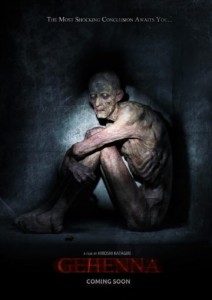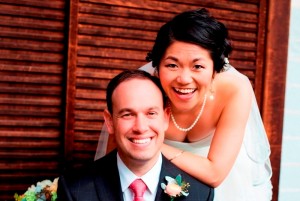Connect: The Unexpected Path of Life After JET
Lillian Hanako Rowlatt, a former JET (ALT, Niigata-ken, 2003-05) wrote an article for this month’s issue of Connect (an online monthly dedicated to the JET Program and expat community in Japan) about how her JET experience helped launched her career delivering Japanese food across the world.
Life After JET: Podcast interview with Stephen Horowitz, Director of Legal English Programs
*******
*******
Steven Horowitz (Aichi-ken, Kariya-shi, 1992-94) is the founder of JETwit, a member of the JETAA USA Board of Advisors, and Director of Legal English Programs at St. John’s University School of Law in Queens, NYC, “the most ethnically diverse urban place on the planet.” He also writes for the St. John’s Legal English Blog.
I was recently interviewed for a podcast episode by Louise Kulbicki, founder of StudyLegalEnglish.com, about the legal English work I do at St. John’s Law School with the LLM students and other non-native English speaking students there. Since my experience on JET teaching English and learning to function well in a cross-cultural environment has been core to my current career, and since JETs often want to know what people do after JET, I thought I’d share the interview here in case of interest.
Here’s a link to the podcast episode titled “LL.M. Legal Writing Tips with Stephen Horowitz”
Topics covered:
- Legal English LLM programmes for non-native speakers
- Legal English writing challenges and tips
- Using IRAC – Issue, Rule, Application, and Conclusion
- Understanding categorization
- Legal English resources
And here’s the video version of the podcast:
To learn more about what I do, or if you’re interested in getting into the field of legal English, you can read more at the St. John’s Legal English Blog. Feel free to contact me as well. (Did I mention I’m fortunate to work with two other JET alums at St. John’s Law School?)
JQ Magazine: JQ&A with Director Shinya Tsukamoto at JAPAN CUTS
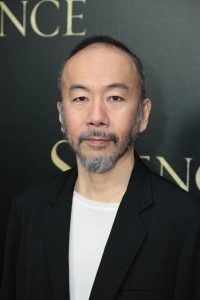
“In the film Killing, I don’t necessarily have one political message that’s strongly pursued, and I want the audience to figure out the film’s message for themselves. Personally speaking, I find it to be incredibly frightening today of what the Japanese government is doing.” (Courtesy of Shinya Tsukamoto)
By Lyle Sylvander (Yokohama-shi, 2001-02) for JQ magazine. Lyle used to work in New York City for Merchant Ivory Productions and the National Geographic Channel. He currently teaches history, international relations and film at an international high school in Shanghai, China.
Shinya Tsukamoto is a Japanese filmmaker most famous for his Tetsuo trilogy of horror/sci-fi films: Tetsuo: The Iron Man (1989), Tetsuo II: Body Hammer (1992), and Tetsuo: the Bullet Man (2009). Other films include Hiruko the Goblin (1991), Bullet Ballet (1998), and Tokyo Fist (1995). He has also acted in most of his own films as well as those of others, most recently in Martin Scorsese’s Silence (2016).
Last week, Tsukamoto made a special appearance at Japan Society in New York City for their annual JAPAN CUTS film festival to receive their prestigious CUT ABOVE Award for Outstanding Achievement in Film, as well as to speak at the East Coast premiere of his latest film, Killing. In this exclusive interview, JQ spoke with the director about violence and politics in his work, lifelong influences, and the story behind the name of his most enduring creation. (Translation by Aiko Masubuchi.)
You have stated that Killing was made in response to the violence you see today in society. All of your previous films have dealt with violence in one way or another—how is your position towards violence different in this film than in others?
When I was little, and for a long time, of course there were some violent things that happened in Japan, but mostly speaking, the violence was outside Japan and Japan was a country that would try to avoid war. It was that way for a long period of time. So, in my earlier films, the violence I was depicting was more fantastical. But now, times have changed: Japan is turning into a country that is getting ready to go to war, and so I could no longer depict violence through a fantastical lens—I needed to depict violence as something realistic and scary and use it as a warning, and so could no longer depict violence the same way.
Does this mean that your film is in response to the Abe administration’s recent foreign policy and re-militarization of Japan?
In the film, I don’t necessarily have one political message that’s strongly pursued, and I want the audience to figure out the film’s message for themselves. Personally speaking, I find it to be incredibly frightening today of what the Japanese government is doing.
How does your version of Nobi (Fires on the Plain) differ from Kon Ichikawa’s classic version of the same anti-war story?
I am a huge fan of Kon Ichikawa’s film Nobi, and I first saw it when I was in high school. I thought it was a fantastic anti-war statement and incredibly moving. In fact, the films I made as a teenager were greatly influenced by it. What I like about Ichikawa’s film is that he brings the camera into the internal darkness of the characters. Even though the setting of the original story is in the Philippines, Ichikawa’s film was shot in Japan. But what struck me in the original story was the beautiful nature and the landscapes of the Philippines, which contrasted the horror of what the soldiers were doing to each other. To me, it seemed important to have the Philippines’ beautiful nature as a backdrop, so the way we approached the film visually was quite different.
JQ Magazine: JQ&A with Jazz Musician Meg Okura
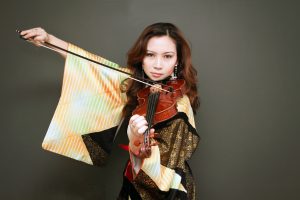
“Japanese people are open and unafraid of owning music from other cultures. It’s a uniquely Japanese thing to embrace arts from other cultures and perform them at a high level.” (Taka Harkness)
By Allen Wan (Ishikawa-ken, 1990-92) for JQ magazine. Allen works as a foreign correspondent in Shanghai. He is also a lecturer in the executive MBA program at Jiao Tong University and currently serves as president of the Shanghai Foreign Correspondents Club. Allen would like to get in touch with other JET alumni in Shanghai who are interested in setting up a JETAA chapter.
Tokyo native Meg Okura defies convention. While forging a prolific career in music since graduating from Juilliard in the ’90s (working with the likes of Diana Krall and David Bowie to name a few), this Grammy-nominated jazz violinist continues reaching out to new audiences through her “world chamber jazz” that could mean anything from performing the erhu with her Pan Asian Chamber Jazz Ensemble or big band music from Japanese and Jewish composers.
As part of the NPO Trio, Okura recently released Live at the Stone, a collaboration with husband Sam Newsome (soprano saxophone) and Jean-Michel Pilc (piano) that creates a unique sound with hints of familiar melodies including well-known Yiddish songs and even excerpts of John Coltrane. Arriving May 13 is IMA IMA, Okura’s latest studio effort. A reflection on motherhood featuring the Pan Asian Chamber Jazz Ensemble and trumpeter Tom Harrell, this new material will be showcased in an intimate live performance at Dizzy’s Club Coca-Cola in New York on Aug. 20.
In this exclusive interview, Okura discusses her inspirations and also tackles taboo topics like whether the music industry needs its own #MeToo movement and the difficulty of making a living as a musical artist in the age of the internet.
You are known for your eclectic music, getting inspiration from jazz, pop, and all the way to 19th century Yiddish music. Is that a concerted effort to avoid being typecast in any particular genre?
I create music that is true to myself. Different types of music reveal themselves to me whether it sounds like Ose Shalom, J.S. Bach, Piazzolla, Coltrane or even YMO. I just welcome what comes to me. But don’t get me wrong, I am a firm proponent of straight-ahead jazz. I am a jazz musician first and foremost, but I also used to perform Brahms and Ravel, and have toured with Michael Brecker as well as many Jewish bands. So I just stay true to myself and try to accept my whole history and different life experiences.
Has being born and raised in Japan influenced your musical style? Why learn the erhu and not the shamisen, for instance?
Japanese people are open and unafraid of owning music from other cultures. For example, I am very unapologetic about learning the erhu, jazz, and Judaism—things that obviously belong to races, cultures, and traditions different from my own. It’s a uniquely Japanese thing to embrace arts from other cultures and perform them at a high level.
What got you hooked on Yiddish music, and did your husband have any influence on that?
Do you know that I have a big band called J-Orchestra? We play music by Jewish and Japanese composers including works by yours truly, who is both Jewish and Japanese. Not only am I a Jew but I have also studied German and Hebrew, so I always felt connected to the Yiddish melodies—minor melodies with major chords. I always cry every time I play “Oyfn Pripetchik.” My husband, Sam Newsome, on the other hand, is not Jewish. So he is not familiar with these melodies at all, and it works out beautifully keeping our music making fresh and unique.
Q&A with Director Hiroshi Katagiri (“GEHENNA: Where Death Lives”)
By David Reilling (Nagano, ALT) and Eden Law (Fukushima, ALT). David hails from Cleveland, Ohio, and now lives on the Central Coast, Sydney in Australia. Eden is also from Sydney (via Malaysia). The interview questions were done by David, while Eden is the editor and did the write-up for this article.
Here in Sydney we do love our film festivals, ranging from the grand Sydney Film Festival, to numerous language, cultural or country-based film programmes like the Japanese Film Festival (also grand), documentaries (Antenna) and short films (Tropfest). Horror and sci-fi gets to shine at the combined ‘A Night of Horror’ and ‘Fantastic Planet’ festival. This is also where director Hiroshi Katagiri gets to shine, with his debut film ‘GEHENNA: Where Death Lives’, after working in the industry as a special effects and makeup artist, sculptor and creature-creator (his impressive IMDB page lists some well-known entries like Wolverine, Hunger Games, Pirates of the Caribbean, Looper). He also lists his favourite films in the genre as ‘Zathura’ and ‘Cabin in the Woods’, giving you an idea of the influences in his film.
‘GEHENNA’ follows five people scouting for locations to build a spanking brand new resort, and while on a secluded island paradise, stumble across an abandoned Japanese WWII bunker, and decides to go exploring. As you can imagine, this is a Really Bad Idea – check out the trailer below.
We had a quick correspondence with Hiroshi as part of the promotion for film.
Your bio says you “moved to the US at age 18 to pursue a career in special makeup effects.” How did you start a career in special effects?
Basically I had build my portfolio and use that to approach make-up FX studios. That was in 1991 and it was kind of a new industry and… work and entry level [positions] were very low. I still feel I was so fortunate.
What was the most difficult special effects thing you ever made?
Dead mermaids for ‘Pirates of the Caribbean on Stranger Tide.’ Not technically difficult but I only had 7 weeks from start to finish to build 3 full body silicon mermaids. That was insane.
You directed the movie Gehenna: Where Death Lives. You also wrote it and did the special make-up effects. How was it? How long did it take? Tell us about it.
For the writing, I was writing as I’m thinking, “How do I make this?”. Since I know what exactly I can do, that really helped on writing… Doing make up FX myself is the best way to save money and keep quality. If I hire someone for this quality of FX, it will cost. It is not easy but I needed to do it. If there’s enough budget, I wouldn’t do the FX myself. I started doing make-up FX about 5 months before start of filming.
Why did you choose Saipan [location of the film]?
I was looking to the location where Japan and America fought. Saipan just came up to my mind first.
What challenges did you have filming there?
Biggest challenge was the weather. We avoided the rainy season but there were rainstorms. On first day of shoot, we had 5-6 showers between. That was scary. I had to modify camera angles to hide wet ground.
Will you direct a movie again?
Of course I will!
Will you make a movie in Australia?
Sure I’d love to! I’m a huge fan of Mad Max!!
JQ Magazine: JQ&A with Patrick Bartley of J-MUSIC Ensemble
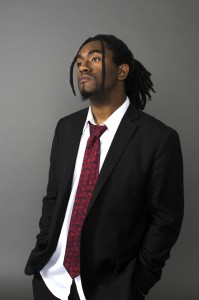
“When it comes to art, there’s always a certain level of intensity that I like, because I like seriousness—especially when it comes to an almost religious seriousness in doing music or art for a higher presence. I love that about Japanese aesthetics.” (Armando Zamora)
By Rashaad Jorden (Yamagata-ken, 2008-10) for JQ magazine. A former head of the JETAA Philadelphia Sub-Chapter, Rashaad is a graduate of Leeds Beckett University with a master’s degree in responsible tourism management. For more on his life abroad and enthusiasm for taiko drumming, visit his blog at www.gettingpounded.wordpress.com.
People from all over the world come to New York to launch their careers in entertainment. But can you do so in the world of Japanese music?
Patrick Bartley has. A Florida native who was inspired at a young age by the sounds of classic video game scores like Sonic the Hedgehog and Streets of Rage, Bartley came to New York to study at the Manhattan School of Music and later formed the J-MUSIC Ensemble, an multi-instrumental group that mixes the various genres that make up the Japanese music scene. A Grammy-nominated saxophonist and composer with a jazz background, Bartley formed the group as a way to express his admiration for the music he first discovered through video games, anime themes and J-pop classics.
The J-MUSIC Ensemble is currently recording their debut album, and their numerous live performances over the past year have led to this week’s release of the band’s first-ever single, FUTUREBOUND, available May 6. The group is celebrating with a special launch party performance that night at Shrine World Music Venue in Manhattan, followed by a performance at ShapeShifer Lab in Brooklyn May 8 with Tokyo electronic music pioneer Coppé and recording artist Kaoru Watanabe.
Keeping busy as a fulltime musician, Bartley has performed with artists as diverse as Wynton Marsalis, Steve Miller and Igor Butman, and earlier this year he bantered on-camera with Stephen Colbert for a taping of The Late Show as a guest with house band Jon Batiste and Stay Human. En route to another gig earlier this year, JQ caught up with him over falafel in Harlem for this exclusive interview.
What should readers know about the J-MUSIC Ensemble?
Even though we feature singers, when you go to a J-MUSIC Ensemble concert, you’re going to experience the music you’re used to hearing in a totally different way, because we put the horns in the front line in the same positions as singers. We want you to feel the horns just as powerfully as you would hear the other elements like the dancing and the singing. But this time, you’re putting the music under a microscope and really giving you the full experience. We’re also taking these songs and putting improvisational elements into it—we’re taking a microscope and putting jazz elements into it. But at the same time, we’re keeping the core essence of the music. We’re not just playing jazz songs; we’re taking the jazz mentality. We’re still playing rock. We’re still playing funk. We’re still playing pop. We still feel that exact feeling, but with a human element—live instruments and live bands performing it. There’s really nothing like it.
What projects are you and the J-MUSIC Ensemble working on at the moment?
The most recent thing we’re excited about is our single release on May 6. With this, people can finally get real, downloadable audio files to keep with them no matter what, and in high quality! We spent a great deal of time and invested a lot to get this working, and the mixes and masters turned out great. Other than this, the band itself is really the project. The way I think of this, project-wise, is I’m constantly looking at this huge, vast sea of Japanese music, art, and cultural history—and I often find myself asking the question, “Where do I start?” So, in that regard, I usually pick what I think can work best for the band, so that we can spend time developing our sound and finding what our natural tendencies are, you know? As well as just what the optimal horn sounds are, and if stuff is electronic, I have to figure out what’s possible to play live with real instruments. Right now, we’ve found that [J-pop band] Perfume is perfect for our instrumentation, so we’re going to keep exploring that, mainly, until we continue to find our sound.
How has Japan influenced your music?
The way Japan has influenced my music has been through understanding the history of the country. And even though I really haven’t gone there, I observe as much as I can, such as the intensity by which they operate on a day-to-day basis in everything. When it comes to art, there’s always a certain level of intensity that I like, because I like seriousness—especially when it comes to an almost religious seriousness in doing music or art for a higher presence. Like actually taking it seriously and creating something that no matter what creates deep emotions and passions.
I love that about Japanese aesthetics. That always has touched me and I think I’ll never really forget it. And then there’s the language, too. It’s a totally different way of thinking, so it’s influenced the way I think about rhythm.
JQ Magazine: JQ&A with Julia Inisan, CLAIR Programme Coordinator
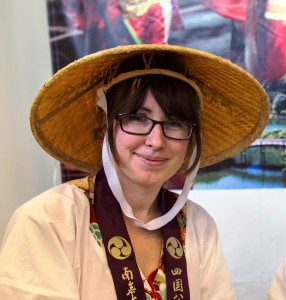
“JET Programme participants are in a very good position to match supply with demand by bringing people together, and there are many great examples of ALTs, CIRs and SEAs using crowdsourcing, social networks, recorded videos, and event planning to support their local community.” (Courtesy of Julia Inisan)
By Rashaad Jorden (Yamagata-ken, 2008-10) for JQ magazine. A former head of the JETAA Philadelphia Sub-Chapter, Rashaad is a graduate of Leeds Beckett University with a master’s degree in responsible tourism management. For more on his life abroad and enthusiasm for taiko drumming, visit his blog at www.gettingpounded.wordpress.com.
Julia Inisan (Kagawa-ken, 2013-15) first visited Takamatsu City, the capital of Kagawa Prefecture in Shikoku, in 2011 on a two-week tea ceremony study tour. That excursion served as a life-changing experience for the Frenchwoman as she fell in love with the city and decided to apply for a spot as a CIR there.
As a JET, Inisan has established herself as a valuable member of her local community, working diligently to attract tourism to the area and promote it on a global stage. But Inisan’s work in Japan has been far from limited to just Shikoku: She currently works to support the next generation of JETs as a programme coordinator for CLAIR. JQ caught up with her to discuss her history and blossoming career in Japan.
What attracted you to Japan in the first place?
As an elementary school student, I was fascinated by mythology and folklore and started reading classics like the Kojiki (Records of Ancient Matters) translated into French. I was also moved by the aesthetics expressed in works such as Murasaki Shikibu’s novel The Tale of Genji and Hayao Miyazaki’s movie Princess Mononoke, and I decided to study Japanese in high school to learn more about the archipelago’s traditional culture.
I then had the opportunity to study for one year at Higashi High School in Kitakata, where I fell in love with Fukushima Prefecture’s gorgeous landscapes, and later at Kyoto University, another life-changing experience. What kept me coming back each time was the kindness of the locals, which helped me feel at home despite the cultural differences.
What made you decide to become a CIR, and what was that like compared with your previous experience living in Japan?
I was a CIR in Takamatsu City from 2013 to 2015. I had always wanted to work for the Japanese local government and promote lesser-known areas of Japan, which is why I applied for the job. As I already had strong connections to Takamatsu, receiving my acceptance letter was one of the happiest moments of my life.
I was Takamatsu City Office’s first CIR. Without a predecessor, it was difficult for me to grasp the extent of my responsibilities at first. Fortunately, I received great advice from the CIRs working at Kagawa Prefecture and from my JET Programme sempai. Finding a good balance between work, volunteering, and private time was also challenging, but my experiences with the local community have been incredibly rewarding.
You currently work as a programme coordinator for CLAIR in Tokyo. How did that opportunity come about, and what kinds of things are you responsible for?
When my two-year contract ended in Takamatsu, my contracting organization encouraged me to apply to be a programme coordinator job at CLAIR. I felt very grateful to the JET Programme and wanted to contribute to its development while supporting Japan’s local communities at a global level. I am learning a lot from my Japanese and foreign coworkers at CLAIR, and most of all from the feedback we receive from JET participants.
I currently work on a wide variety of projects, such as planning content for Post-Arrival Orientations and the CIR Mid-Year Conference, revising publications like the CIR Handbook, and directing workshops at ALT Skill Development Conferences. Last year, I was fortunate to work in cooperation with Kagawa Prefecture to welcome back Sophie Le Berre (CIR Kagawa-ken, 1995-97), one of the 12 JET Programme alumni who returned to their former places of work as part of CLAIR’s Satogaeri Project.
I am also part of the team in charge of the JET Programme Video Contest, which started in October last year. We have received lots of awesome submissions from current and former JET participants promoting their regions from their points of view. I am greatly impressed by the quality and creativity of the videos, which you can view and vote for on the contest’s website. I hope more and more JET participants will participate in this initiative, as these videos are helping tourists discover amazing areas of Japan they’ve never heard of. If you are interested in the contest and missed the deadline for the Autumn/Winter edition, don’t worry: from April 7, 2016, you can still participate in the Spring/Summer edition.
JQ Magazine: JETAA Sakura Sweethearts
By Rick Ambrosio (Ibaraki-ken, 2006-08) for JQ magazine. A dusty old fixture of the JET Alumni Association of New York (JETAANY) community, Rick manages projects at a software company by day and sends drafts late into the night as a writer for JQ.
Well, folks, it’s that time of year again. Maybe you have a special someone you’re going out with on Valentine’s Day. Perhaps you’re grabbing a bunch of friends and doing a “singles karaoke night” instead (Like some JETAANY folks are). Maybe you forgot and this is a great reminder to get some flowers and make a dinner reservation ASAP. Either way, you can only hope for the best.
But some people seem to luck out in love, and I have to say I’m happy when it’s people I like. And what kind of people do I often like? JETs. That’s right, folks, we are going to interview some Cupid-conquering JET couples and get to know how they met, where they came from, and maybe a little advice on how to spark a little JET romance of your own. So if you find yourself at that next JET alum enkai thinking “what if…?,” this might be for you.
Chau Wing Lam (Gunma-ken, 2005-07) and John Ciocco (Saga-ken, 2006-07)
Did you meet on while on JET? Or after JET through an alumni meeting?
We met during a JETAANY alumni event—a boat cruise on August 20, 2008.
How long have you been together?
We’ve been together since 2008, married in 2014.
Was it your mutual love for Japan that brought you together, or something else?
Mutual love for Japan gave us something to start talking about, then the rest of our conversation filled in from there. We actually got married at the Shofuso Japanese House and Garden here in Philadelphia to commemorate what brought us together.
Have you guys ever had to do the “distance” thing? If so, what was that like?
Yes. When we first met, Chau was living in Hoboken and John was living in South Jersey. The commute was about two hours each way, so we only saw each other on weekends. We had some challenges at first being that far away and with the both of us trying to cultivate a new relationship, but we worked through it. Chau moved to Philly in the fall of 2009, shortening the commute to about half an hour—and now we’re married with a four-and-a-half-month-old baby!
Has being on JET made you a “stronger” couple? If so, how?
It’s a shared history that grounds us and helps us remember the many commonalities we have despite our inherent differences. We both learned to be self-deprecating to try and get our students interested in English, and that is definitely a quality that we love about each other and helps us through arguments that arise. Relationships aren’t easy, but we work at it every day—so yes, in some ways, knowing how far out of our comfort zone we’re able to stretch helps us.
What advice do you have for other budding JET couples?
Always remember to have fun with each other as you did in Japan—ALWAYS. And use your commonalities to help bridge the gap when the divide seems too wide!
JQ Magazine: JQ&A with James Rogers on Smart Smart Language Apps
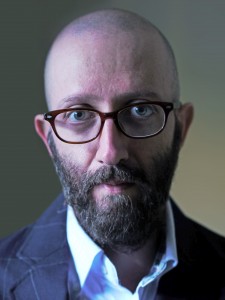
“Some in government suggest that the path to citizenship includes learning English. What we intend to do is provide all of our apps to these learners, but entirely for free. It is a big dream of mine to give back to society in such a way.” (Courtesy of James Rogers)
By Rashaad Jorden (Yamagata-ken, 2008-10) for JQ magazine. A former head of the JETAA Philadelphia Sub-Chapter, Rashaad is a graduate of Leeds Beckett University with a master’s degree in responsible tourism management. For more on his life abroad and enthusiasm for taiko drumming, visit his blog at www.gettingpounded.wordpress.com.
For many of us, our time teaching Japanese people the finer aspects of English was limited to…well, the JET Program. But that hasn’t been the case for James Rogers (Aichi-ken, 2003-06).
As the president of Kyoto JALT and the founder and editor of the Kyoto JALT Review, Rogers has utilized his comprehensive knowledge of English-language education to develop Smart Smart, a series of apps containing materials geared towards Japanese learners of English and vice versa (as well as other language learners). Among their features, the apps contain more than 100,000 words of content, a textbook using modern music to study English, and pronunciation exercises for native Chinese, Korean and Japanese speakers.
To learn more about how Smart Smart has thrived and what’s ahead, JQ caught up with Rogers, who also happens to be a Ph.D. candidate doing corpus linguistics research.
How did your experience as a JET inspire you to launch Smart Smart?
The JET Program certainly was my first foot in the door in regards to English education in Japan—without it, I do not think any of this would have been possible. So, in that regard, I view my experience on JET as an essential aspect to my current successes with Smart Smart and my career teaching English at the university level. I think the JET Program is a wonderful opportunity for foreign teachers and Japanese students.
What inspired you to create Smart Smart?
Well, we really are still just in the beginning stages of really taking advantage of technology in education, and I just looked at what is currently available and realized that I could totally improve upon it drastically. Also, since I am a real teacher/researcher and do not depend on this to make a living, I could provide it for nearly ten times cheaper than some technology that is currently available. For example, over 30 volunteer researchers and translators helped me to create the content for over five years. Just the apps existing and the papers we’ve all published together helps all of our careers, so that is the benefit for the team. In addition, some team members already have tenure and Ph.D.s and just wanted to be part of something that truly had the potential to improve upon English education. Since I didn’t need to pay anyone to create the resources, the price we can sell them at can be kept at the bare minimum. Originally, I intended to actually release everything for free, but then I had the opportunity to collaborate with Ernie Thomason, the creator of the best-selling Flashcards Deluxe, and realized that not only can I provide the best quality content, but also the most cutting edge technology as well for mere pocket change. Without Ernie, none of this could have been possible.
Your apps contain well over 150,000 words of content. How often is the content updated?
We update the apps themselves—in fact, just last week we added a great new feature to the quiz function in the app. But the content, other than finding typos, is fixed. For example, the app 英語マスター1万/English Master 10,000 itself has over 100,000 words of example sentences. Each sentence highlights how to use one of the chunks it teaches (all chunks and sentences have translations as well). My Ph.D. research looked at years’ worth of corpus data from the Corpus of Contemporary American English to identify these chunks. So, basically, these are the high-frequency chunks of English according to the corpus. That’s a fact that doesn’t change, and thus no updating of content is really necessary. You know, chunks like “along those lines,” or “to make a statement,” or “a big deal”…these chunks aren’t going anywhere.
JQ Magazine: JQ&A with Chin Music Press Owner Bruce Rutledge
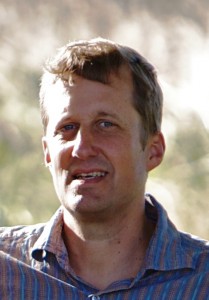
“JETs have a special bond, somewhat like people who go to the same university, and I think returning JETs can exploit that connection to open a few doors. JETs and MEFs are in all sorts of powerful positions these days at multinationals, news agencies, nonprofits, and government jobs. Use that network!” (Courtesy of Bruce Rutledge)
By Julio Perez Jr. (Kyoto-shi, 2011-13) for JQ magazine. A bibliophile, writer, translator, and graduate from Columbia University, Julio is currently working at Ishikawa Prefecture’s New York office while seeking opportunities with publications in New York. Follow his enthusiasm for Japan, literature, and comic books on his blog and Twitter @brittlejules.
After spending a few years in Chiba doing teaching and promotional work that would be all too familiar to JET ALTs and CIRs, Bruce Rutledge went on to work as an editor and writer in Japan for over 15 years. Today, he is the owner of Chin Music Press, a publishing company in Seattle with strong ties to Japan.
In this exclusive interview, Rutledge discusses his time as a Monbusho English Fellow (MEF), which was in some ways a precursor to the JET Program, and shares some of his experiences in a variety of media positions in Japan along with the origin and direction of Chin Music Press.
Since most of our readers are JET alumni, they’re probably already wondering about your connection to JET. Would you mind telling us a bit about the Monbusho English Fellowship you participated in? Why were you drawn to that program? Where in Japan were you placed, and how would you describe your activities as a Monbusho English Fellow? Also, how would you connect MEF with JET and compare it to what JET eventually became?
I was an MEF from 1985 to 1987 in Funabashi, Chiba, I think my job was sort of a combination of a CIR and a teaching assistant. I spent every Monday in the city hall doing PR work for Funabashi, whose slogan was “We More Sports.” I talked to them about this thing called a verb and how their slogan needed one, but my intervention was too late. Tuesday through Friday, I would teach in the schools. I taught a whole year at one high school and spent the rest of the time rotating from middle school to middle school with an occasional elementary school visit thrown in. It was a memorable period of my life. I loved my time there.
Are there any special anecdotes you would like to share from your time in Japan?
Perhaps the time a neighborhood kid of five or six broke into my apartment by climbing through an open window. The little burglar left his shoes on the windowsill. It was just the sort of juxtaposition I love about Japan.
When you finished with MEF, what was your next job? At that time, what direction did you see your life taking, and how did the your path end up differing?
After MEF life, I moved about 15 stops down the Sobu Line to Suidobashi and took a job with Universal News Japan. I was an editor and had planned to have a career in journalism. That plan worked out for nearly 15 years, until the Internet changed everything and I started longing to work in a longer form.
You seem to have had many media-related positions, mostly involving Japan or Asia. How would you describe the kind of work you did post-MEF? During those times, were you living primarily in Japan or somewhere else? How did that impact your performance in those jobs?
I lived in Japan for 15+ years. I never lived in another Asian country. I was a Louis L’Amour of white-collar jobs, doing a little bit of everything. I even did a 15-minute shortwave radio newscast from the bowels of NHK headquarters that aired at 2 a.m. Japan time. We would sleep in bunk beds from 2:30 to 5:00, then do another broadcast at around 5:30. That was the weirdest job I had.
JQ Magazine: JQ&A with Patrick Newell, Founder of Tokyo International School
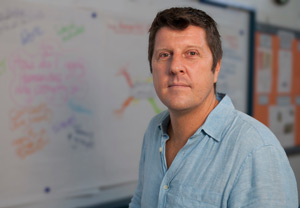
“Technology is constantly changing and students need to be equipped with the skills to master changing technology. They also need to be prepared for environmental, financial, civic and global literacy because of the interconnectedness of these issues in a globalized world.” (Courtesy of 21foundation.com)
By Lyle Sylvander (Yokohama-shi, 2001-02) for JQ magazine. Lyle has completed a master’s program at the School of International and Public Affairs at Columbia University and has been writing for the JET Alumni Association of New York since 2004. He is also the goalkeeper for FC Japan, a New York City-based soccer team.
Patrick Newell founded Tokyo International School in 2001, which has since become a model institution in many areas of education and learning. The same philosophy is behind the recent launch of the Global Institute, a 21st century kindergarten and afterschool program based in Naka-Meguro.
Patrick holds a postgraduate diploma from Oxford Brookes University with a concentration in international education, and has been a speaker and participant in over 20 international school conferences and workshops. He has also chaired International School Accreditation Teams for the Council of International Schools and New England Association of Schools and Colleges, and currently serves as the chair of the American Chamber of Commerce in Japan (ACCJ) Learning Committee.
In this exclusive interview, Newell shares with JQ how traveling the world sparked the interest his chosen profession, the subjects essential for students of the 21st century, and his work through the years as a coordinator and speaker for TEDx in Japan.
How did you become interested in education?
I fell into it while traveling the world. I was working in real estate in Southern California when I suddenly decided that I didn’t want to live that corporate life anymore. So, at the age of 25, I bought a multiple-stop airline ticket to travel the world. I went through the Caribbean, Europe, India and Thailand. While in Thailand, I decided that I wanted to spend a considerable amount of time somewhere in Asia and decided that Japan would be the best place to do it. I moved to Tokyo and joined my wife in the English education business. We then started an English tutoring service for students at international schools. I didn’t have any formal educational training, and so relied on my intuition and what was valuable or wrong from my own education. Education became a passion of mine and I was researching and developing my own model while observing the different models among the international schools in Japan.
Why did you found the Tokyo International School?
We had two daughters and decided to open an international school for them. We started with a preschool and then decided to open Tokyo International School. We started with 12 students in one classroom and now have over 320 students from 50 countries. It was such a challenge opening an international school in the oldest international school market in the world.
JQ Magazine: JQ&A with Laurel Lukaszewski, JETAA Initiative Project Director
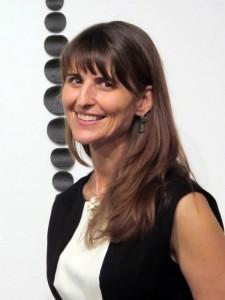
“I believe very strongly that a national organization will strengthen the network and relationships between both chapters and individual alumni, as well as elevate the status and recognition of the JET Programme and its alumni in the greater U.S.-Japan arena.” (Courtesy of Laurel Lukaszewski)
a
By Eden Law (Fukushima-ken, 2010-11) for JQ magazine. Eden currently serves on the JETAA New South Wales committee in Sydney, Australia as the online social media, webmaster and occasional editor. Got feedback? Leave a comment below.
In 2013, the JETAA Initiative project was launched by the United States-Japan Bridging Foundation (USJBF), with funding provided by the The Japan Foundation Center for Global Partnership (CGP). The first phase of the project was to assess the feasibility of a national JETAA organization, with the next phases dealing with the structure, duties and objectives of the new organization.
The first phase (feasibility study) has now wrapped up and its findings presented at the September 2014 National JETAA USA Conference, and the next phase is currently underway. JQ spoke with Laurel Lukaszewski (Kagoshima-ken, 1990-92), JETAA Initiative project director (who is also a highly noted, Washington D.C.-based ceramic artist in her own right), who kindly gave her time to discuss the JETAA Initiative, the findings and next steps for the project.
How did you come to be selected for the role of project director of the JETAA Initiative?
I applied for the position after I saw the job announcement posted in a number of different places. I work as an artist full-time, but my schedule is flexible and I thought this would be an exciting project. In my previous career, I was the executive director of the Japan-America Society of Washington, D.C. Before that, I worked for the Japan-America Society of the State of Washington in Seattle as their program director. I’ve also been part of the JET selection process for over 15 years (reviewing applications, interviewing, working at the embassy as the review committee liaison for two seasons). I have also been a board member of the National Cherry Blossom Festival since 2002 and have served on a number of arts-related nonprofit boards and committees over the years. I was also the secretary, then president, of the JETAA Pacific Northwest chapter in Seattle in the late ’90s, so JETAA is near and dear to my heart.
It’s been a year since your appointment. What were the main challenges you faced as a director?
While not exactly a challenge, it has been paramount to reach out to all 19 chapters in the U.S. to give them an understanding of what we are doing and why we think creating a national organization is necessary. To do this, both [JETAA co-founder] Paige Cottingham-Streater (Mie-ken, 1988-89) and I have attended national and regional conferences to give presentations and speak with alumni to garner their support. We have also made site visits to chapters in Kansas City, Atlanta and Denver to find out what challenges exist at the local level. It was also imperative to show the progress we made over the first year to our funder, The Japan Foundation Center for Global Partnership, so that we could continue.
Why was there a need to examine to conduct a feasibility study on whether a national organization was required?
The only way a national organization will be successful is if the JET alumni community wants it. This is being created for them. I believe very strongly that a national organization will strengthen the network and relationships between both chapters and individual alumni, as well as elevate the status and recognition of the JET Programme and its alumni in the greater U.S.-Japan arena, but the JET alumni community needs to believe this, too. We hope that the national organization will provide much needed support to smaller chapters and give alumni who live outside of large cities a way to connect to the broader JETAA community.
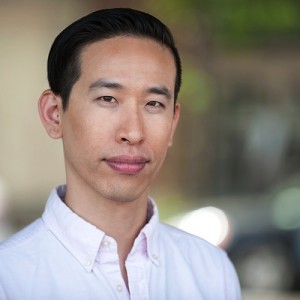
“Living in Japan, you learn not just the Japanese language, but a new kinesthetic language as well, such as bowing all the time like it’s an instinct, or getting used to sitting on a tatami mat instead of a chair, or bathing Japanese-style. It’s like a new vocabulary for living in your own body.” (Martin Bentsen/City Headshots)
By Rafael Villadiego (Nagasaki-ken, 2010-13) for JQ magazine. A member of JETAA New South Wales, Rafael is a collector of words on a journey still searching for a destination, who has a tendency to forget, we are all sometimes like the rain…
Lee-Sean Huang (Oita-ken, 2003-06) was an ALT in Nakatsu City. Upon returning to the United States, he became the webmaster for JETAA New York. In 2008, together with Steven Horowitz (Aichi-ken, 1992-94), he helped to found JETwit.com in 2008 as an avenue for connecting and giving voice to the JET alumni freelance and professional community.
A modern-day Renaissance man, Huang is the co-founder and creative director behind the community-centered design and social innovation firm Foossa. He is also a faculty member at SVA’s MFA Design for Social Innovation program and an instructor of the Brazilian martial art capoeira.
He recently joined the Wisdom Hackers collective together with other likeminded artists, activists and entrepreneurs, to which he contributed a chapter entitled “The Thinking Body,” which outlines his views behind the virtues of kinesthetic creativity. In this exclusive interview, Huang shares his journey and thought processes with JQ’s readers.
The philosophical dispatches from Wisdom Hackers are described as an “incubator for philosophers that compiles dispatches from young, edgy thinkers from major cities across the globe.” Can you tell us a little more about this initiative and how you got involved?
We are building a movement for critical inquiry and connecting ancient wisdom to our contemporary context. In our present form, we are partnered with e-publishers The Pigeonhole and releasing a dispatch a week over 10 weeks. Next year, we plan on releasing a limited edition physical book made by monks in Denmark. Beyond publishing our own ideas, we want to create a curriculum or “cookbook” of sorts, and get it into schools, colleges, and other learning environments. The Wisdom Hackers curriculum would provide a starting point for anybody to start asking deep questions, think critically, and create their own dispatch to tell their own story and perspective. The curriculum would also include a guide for how to build your own community of like-minded seekers. That’s a bit of a preview of where we are going with Wisdom Hackers.
My friend Alexa Clay is one of the original instigators of Wisdom Hackers. We were introduced a few years ago through a mutual friend, Alnoor Ladha, who is also a Wisdom Hackers seeker. I ended up becoming an advisor for Alexa’s book, The Misfit Economy, and on her project, League of Intrapreneurs. When Alexa approached me about Wisdom Hackers, I jumped at the idea. I had a bunch of ideas floating around in my head that did not fit in the format of the usual blog posts and articles that I write as part of my design and teaching career. I also liked the challenge of writing longer form content, something I was a little afraid of doing, but that is exactly why I said “yes.”
You are certainly amongst august company. Have you had any direct interaction with the other “seekers” of your collective, or have you developed your ideas primarily on your own?
I have become good friends with the New York-based Wisdom Hackers crew. We hosted a Wisdom Hackers panel discussion here in September. We have edited each other’s dispatches and also have a private Facebook group where we share ideas, so there is lots of cross-pollination happening.
JQ Magazine: JQ&A with Web Entrepreneur Vanessa Villalobos
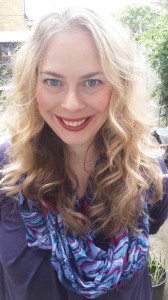
“If you create businesses based on your own experience and enthusiasms, you’ll never tire of them. Be sure to network with JETAA to stay in touch with people who are interested in Japan.” (Courtesy of Vanessa Villalobos)
By Rafael Villadiego (Nagasaki-ken, 2010-13) for JQ magazine. A member of JETAA New South Wales, Rafael is a collector of words on a journey still searching for a destination, who has a tendency to forget, we are all sometimes like the rain…
Like many JET alums, Vanessa Villalobos (Tochigi-ken, 2000-03) thoroughly enjoyed her time in Japan and was seeking a practical means to maintain that connection upon returning home. Seeking to recapture her experiences on the JET Program and maintain her Japanese language skills after returning to the United Kingdom, she founded the travel/lifestyle/culture site JapaneseLondon.com and the language exchange hub, IsshoniLondon.co.uk.
As an independent businesswoman and entrepreneur, she offers some advice to JQ readers seeking to pursue their own ventures and shares some insight into the trials and tribulations of language exchange. She also offers insider tips to discovering the hidden Japan in London along with the colorful contrasts between the two island nations, her thoughts on the recent vote for Scottish independence, and her take on the UK version of nattō.
How long did you spend on the JET Program and in which prefecture were you placed?
I was a “one-shot” ALT in Tochigi-shi for three years. Tochigi-ken is north of Tokyo and is famed for Nikko, strawberries and gyoza.
How did your time on JET influence the overall design and purpose of the websites?
Japan was endlessly fascinating to me, and I loved teaching Japanese learners of English. Thus, I chose to focus my business endeavors on connections between Japan and England.
IsshoniLondon.co.uk connects private tutors of English to Japanese learners of English. Most of the tutors are ex-JETs. In my intro video on the site, I explain how the kindness of friends and teachers in Japan allowed us teachers to develop an understanding and fondness for Japanese language and culture, and how we hope Japanese people will develop the same fondness of the UK. I am always looking for top-quality tutors, so please do get in touch if you’d like to work as a freelance tutor.
JapaneseLondon.com does what it says on the can! It’s a labour of love and is all about discovering Japanese things in London. It promotes and profiles the individuals, events and businesses that together make up “JapaneseLondon”! There is an events calendar, and I’ve just added a job board. Please do sign up to the newsletter on the site! JapaneseLondon.com can also connect you to a tutor of Japanese here in London!
Do you have any advice for JETs looking to setup similar initiatives in their hometowns?
Just get stuck in—and don’t give up. If you create businesses based on your own experience and enthusiasms, you’ll never tire of them. Staying power is important as it is sooo hard to build your own business from scratch. But it is deeply satisfying at the same time! Be sure to network with JETAA to stay in touch with people who are interested in Japan.
Justin’s Japan: Interview with Yoshiki of X Japan on the Band’s Madison Square Garden Debut
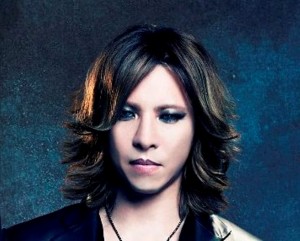
“At an X Japan show, we create a show with the audience—it’s not ‘the band is performing and the audience is just watching,’ so we create the show together. We’re going to try to make Madison Square Garden like a huge club.” (Courtesy of ID PR)
By JQ magazine editor Justin Tedaldi (CIR Kobe-shi, 2001-02) for Examiner.com. Visit his Japanese culture page here for related stories.
For Yoshiki Hayashi, this Saturday (Oct. 11) will go down in J-rock history, as one of the biggest bands in Asia makes their debut at Madison Square Garden. Formed over 30 years ago, X Japan first gained notoriety in the mid-’80s by ushering in the visual kei movement, a style that continues to evolve through other Japanese megastars like L’Arc~en~Ciel (who headlined the World’s Most Famous Arena themselves in 2012).
At the center of it all is X Japan’s founding member, Yoshiki. An equally talented songwriter, heavy metal drummer and classical pianist, he is both the heart and soul of X Japan, and, having lived in Los Angeles for two decades, the ideal mouthpiece for the band’s American tours, which started with a bang in 2010 at Lollapalooza and included a sold-out gig at New York’s now-defunct Roseland Ballroom.
In this exclusive, expansive interview, I spoke with Yoshiki about how the group’s original hopes to play the Garden in 2008 were dashed by personal health and management troubles, his favorite, anime, manga and X Japan songs, and his experience working with legends like Stan Lee, KISS, and the Emperor of Japan.
How did this concert for Madison Square Garden come together? I know there were plans to do this in 2008; can you talk about this history?
Our band reunited around the year 2008. We did our reunion concert in Tokyo Dome, three days or so, I think. At that time, we were also thinking of performing [shows] outside of Japan, and Madison Square Garden was one or two of [the ideas]. But for some reason they didn’t happen, so since then, that venue was always in our minds. A few years ago, we decided to try schedule Madison Square Garden. I think we were kind of confirmed last year.
It’s a long road.
Yes. Well, considering that X Japan was not doing anything—I mean, the band broke up around the end of 1997, so when we reunited we had almost 10 years of a break. We started doing a bunch of arena shows, and then we started touring the world when we went to 16 countries or so. Considering this, the [last] six or seven years have been tours [laughs].
Are there plans for X Japan to play any other concerts for the remainder of the year?
Not now. We just announced our shows in Japan, this place called Yokohama Arena, so we [performed] there Sept. 30 and Oct. 1. It’s kind of like a prelude to Madison Square Garden and a kickoff to [that] show, about 10 days before that. As of now, Madison Square Garden is the only American show, but [depending] on how it goes, we may start another world tour. We’re just talking about it right this moment.
For the complete story, click here.

